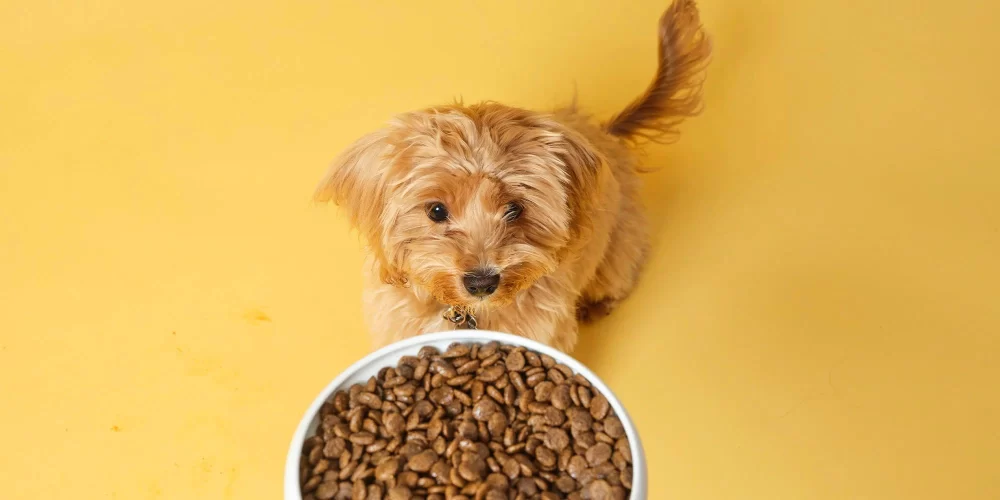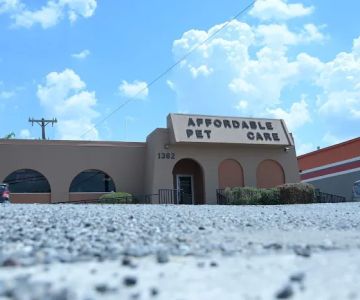Grain-Free Diets for Pets: Pros and Cons
As a pet owner, it’s natural to want the best for our furry friends, especially when it comes to their nutrition. Over the years, the pet food market has seen a rise in grain-free diets, marketed as a healthier option for pets. I remember the first time I considered switching my dog to a grain-free diet. My vet recommended it as an option due to some digestive issues my dog, Bella, had been facing. But like many pet owners, I had some concerns about whether grain-free food was truly better. So, I decided to research it further and weigh the pros and cons to make an informed decision. If you're in a similar situation, here’s what I discovered about grain-free diets for pets.
1. What is a Grain-Free Diet for Pets?
A grain-free diet for pets eliminates grains such as wheat, corn, soy, and rice from their food. Instead, these diets use other carbohydrate sources, such as potatoes, peas, sweet potatoes, and legumes. Many people believe that dogs and cats, being descendants of carnivores, don’t need grains in their diets. This is why grain-free diets often focus on protein-rich ingredients like chicken, beef, or fish. But not all pets have the same nutritional needs, and some may benefit from the grains being removed from their food, while others may not.
2. The Pros of Grain-Free Diets for Pets
When I switched Bella to a grain-free diet, I was surprised to see some positive changes in her health. Here are the main advantages I noticed and what experts say about these diets:
2.1. Improved Digestion and Fewer Allergies
One of the biggest reasons people opt for grain-free diets is the potential improvement in digestion. Some pets have sensitivities or allergies to certain grains, which can cause gastrointestinal issues like bloating, diarrhea, or vomiting. Bella had been experiencing some stomach upset, and after switching her to a grain-free diet, I noticed fewer digestive problems. The alternative carbohydrate sources in grain-free foods are often easier on a pet’s digestive system. If your pet shows signs of food sensitivities, grain-free options may help alleviate these symptoms.
2.2. Healthier Coat and Skin
Another benefit I noticed with Bella’s grain-free diet was her shiny coat and healthier skin. Grain-free pet foods often contain more high-quality proteins and omega fatty acids, which support skin and coat health. Bella’s fur became softer, and her dry patches started to improve. Pet owners often report similar benefits when switching to grain-free food. The higher protein content can also contribute to muscle health, especially in active or athletic pets.
2.3. Weight Management
Grain-free diets tend to be higher in protein and lower in carbohydrates, which can be beneficial for weight management. I’ve seen it in Bella, as she maintained a healthy weight without needing special weight management foods. This type of diet can help pets feel full longer and prevent overeating. Additionally, for pets with more active lifestyles, the higher protein content can support energy levels and lean muscle mass. If your pet is overweight or struggling with weight control, a grain-free diet could be a good option to explore.
3. The Cons of Grain-Free Diets for Pets
While grain-free diets may offer benefits, they are not without their downsides. When I made the switch for Bella, I also discovered some of the potential drawbacks of feeding my dog a grain-free diet. Here are the main cons that I encountered and that I’ve read about from other pet owners:
3.1. Potential Nutritional Imbalances
Not all grain-free diets are created equal. Some grain-free pet foods might not provide the correct balance of nutrients, especially if the carbohydrate content is too high. Some grain-free foods may rely on legumes and potatoes as their primary carbohydrate source, which could lead to an imbalanced diet. I learned that it's essential to carefully choose a high-quality grain-free food that provides the necessary nutrients, including fiber, vitamins, and minerals. Without the right nutritional balance, a grain-free diet can cause long-term health problems.
3.2. Risk of Heart Disease (Dilated Cardiomyopathy)
One of the more concerning issues that have come to light in recent years is the possible link between grain-free diets and heart disease, specifically dilated cardiomyopathy (DCM). Some studies have suggested that diets high in legumes, such as peas and lentils, may be linked to an increased risk of DCM, particularly in certain breeds. While the research is still ongoing, this is something that I kept in mind when choosing Bella’s food. If you’re considering a grain-free diet, it’s a good idea to consult with your vet about any breed-specific risks related to heart health.
3.3. Higher Cost
Grain-free diets are generally more expensive than traditional pet food, primarily due to the high-quality ingredients used. For pet owners like me, this can be a significant consideration. While I noticed improvements in Bella’s health, I did have to budget for the higher cost of grain-free food. This is something to keep in mind, especially if you have a large pet or more than one pet, as the costs can quickly add up over time.
4. How to Choose the Right Grain-Free Diet for Your Pet
If you’re considering switching your pet to a grain-free diet, it’s important to choose the right food. Here are some tips I found useful when selecting Bella’s food:
4.1. Check the Protein Source
Look for a high-quality protein as the first ingredient. Dogs and cats are carnivores by nature, and they need high-quality animal protein in their diet. Whether it’s chicken, beef, lamb, or fish, ensure that the primary protein source is animal-based rather than plant-based.
4.2. Look for Quality Carbohydrates
Although grain-free diets eliminate grains, the alternative carbohydrates should still be nutritious. Sweet potatoes, peas, and lentils are great alternatives that are packed with fiber and essential nutrients. Avoid foods with too many fillers, such as potatoes or corn, which offer little nutritional value.
4.3. Consult with Your Vet
Before switching your pet to a grain-free diet, it’s always a good idea to consult with your veterinarian. They can help you determine if a grain-free diet is appropriate for your pet’s health needs, especially if your pet has underlying health issues or is prone to certain conditions.
In the end, whether a grain-free diet is right for your pet depends on their specific health needs, lifestyle, and sensitivities. For Bella, it made a noticeable difference, but every pet is unique. By understanding the pros and cons, you can make an informed decision that best supports your pet’s well-being. If you have more questions or need tailored advice, be sure to visit Hidden Brook Veterinary for expert recommendations.












